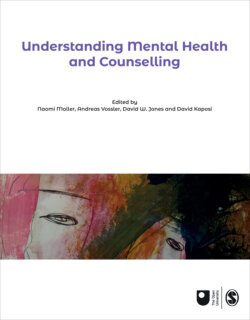Читать книгу Understanding Mental Health and Counselling - Группа авторов - Страница 56
На сайте Литреса книга снята с продажи.
4.2 DSM-5: the end of Spitzer’s revolution?
ОглавлениеThose involved in planning DSM-5 challenged key tenets of Spitzer’s approach. They identified a number of problems stemming from the changes implemented in DSM-III. These problems included the narrow and overly rigid categories introduced in DSM-III. As noted in the introduction to DSM-5: ‘the once plausible goal of identifying homogenous populations for treatment and research resulted in narrow diagnostic categories that did not capture clinical reality, symptom heterogeneity within disorders, and significant sharing of symptoms across multiple disorders’ (APA, 2013, p. 12). DSM-5 argued that apparently high rates of comorbidity were a result of overly narrow categories that required clinicians to make more than one diagnosis, something that could be circumvented by using broader categories.
However, during the DSM-5 planning process, the government-funded National Institute for Mental Health (NIMH) had proposed an entirely different way forward: the Research Domain Criteria (RDoC) project. Thomas Insel (the NIMH director), and his colleagues, proposed that the answer lay not in the conceptualisation of clinical categories but in the identification of problems in the brain itself, in ‘neural circuitry’ (Insel et al., 2010). However, the team acknowledged this was a high risk, long-term option with no guarantee of a successful outcome. The competing approaches of the DSM-5 planners and the RDoC project suggested that there was a growing divide between practitioners and biomedically oriented psychiatric researchers.
DSM-5 was published in 2013 (APA, 2013) and led to widespread debate among academics, professionals, service users and in the media. DSM-5’s feedback website received over 13,000 comments and thousands of organised petitions (APA, 2013). DSM-5 argued for the need to adopt a more dimensional system of diagnosis rather than a categorical approach. In a categorical approach you either meet criteria for a category or you do not, whereas in a dimensional approach, problems are viewed as lying along a spectrum and are thus a matter of degree. A dimensional system for personality disorders had originally been proposed by the authors of DSM-5 but, since this proposal had ‘not been widely accepted’ (APA, 2013, p. xliii), the personality disorder categories in Section II were largely unchanged; the proposed dimensional approach to personality disorder was, instead, included in Section III, ‘emerging measures and models’. This section also included much more extensive detail on cultural formulation, and one of the appendices included a glossary of cultural concepts of distress. DSM-5 aimed for a simplified system of diagnosis and it abandoned the multi-axial system introduced in DSM-III. Axes I–III were now combined and axis IV was dropped (in favour of ICD codes for environmental factors). Axis V (the rating system to assess a person’s everyday functioning) was abandoned due to its lack of conceptual clarity and questionable psychometric characteristics. A final change was that DSM-5 was referred to by Arabic rather than Roman numerals (e.g. ‘DSM-III’). This was to enable incremental updates in the future; thus, if and when DSM-5.1 is published, it may include updates only on some categories and will not be a wholesale revision as previous editions have been.
Dimensional system of diagnosis A system of organising diagnoses that assumes that mental health problems are best understood as existing along a spectrum or dimension (e.g. how much they disrupt one’s life). Different types of dimensions have been proposed for different forms of distress.
In summary, DSM-IV largely followed the approach of DSM-III, focusing more on the process of decision-making. DSM-5, on the other hand, challenged the conceptual framework of the third edition, although its more radical proposal to move to a dimensional system was thwarted.
